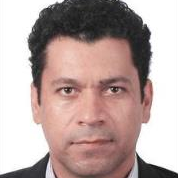Remote Sensing and Modelling of Water Storage Dynamics from Bedrock to Atmosphere
A special issue of Remote Sensing (ISSN 2072-4292). This special issue belongs to the section "Remote Sensing in Geology, Geomorphology and Hydrology".
Deadline for manuscript submissions: closed (15 October 2023) | Viewed by 9418
Special Issue Editors
Interests: satellite gravity; satellite altimetry; satellite remote-sensing data assimilation; calibration; inversion
Special Issues, Collections and Topics in MDPI journals
Interests: remote sensing for hydrology; passive microwave remote sensing for surface soil moisture estimation; hydrological modeling; data assimilation; radiometer-radar data fusion; Unmanned Aerial Systems (UAS)
Special Issues, Collections and Topics in MDPI journals
Interests: multisensor data integration; data-to-model assimilation; surface and subsurface hydrology; active and passive remote sensing; radiometer; SAR; LiDAR; radiative transfer; polarimetry; parameter extraction; Earth system; soil; root zone; vegetation; plant ecology
Special Issues, Collections and Topics in MDPI journals
Interests: geodetic sensors for hydrology; earth system; groundwater; climate change
Special Issues, Collections and Topics in MDPI journals
Special Issue Information
Dear Colleagues,
Earth observation (EO) satellite missions provide invaluable global-to-regional estimates of hydrologic variables from atmosphere to lithosphere. From these EO missions, the Gravity Recovery and Climate Experiment (GRACE) and its follow-on mission (GRACE-FO) record data that are inverted to so-called terrestrial water storage (TWS), i.e., a virtual summation of surface and subsurface water storage. The separation of TWS into its individual water-storage compartments requires careful postprocessing that challenges the use of these data for hydrological applications. Here, specific analysis of auxiliary mission data would improve the knowledge of spatial and temporal dynamics of TWS and its subdomains. Satellite altimetry missions provide measurements of water-level changes in seas, lakes, and rivers. Various satellite missions, including SMOS, SMAP, ASCAT, AMSR2, and Sentinel-1, provide multiyear to multidecadal soil-moisture estimates at various soil depths. Moreover, seasonal changes in vegetation water content related to microwaves (e.g., SMOS vegetation optical depth) or optical observations (e.g., MODIS normalized difference water index) may also influence TWS dynamics. However, a reliable and physically sound relationship between measured signals, and their respective spatial and temporal dynamics with water storage is considerably complex and demands research in this scientific field.
Despite the increasing interest in using remote-sensing techniques for subsurface hydrology, its benefits need to be realized for monitoring vegetation, surface, and root-zone soil water storage, as well as groundwater storage from space. Therefore, the goal of this Special Issue is to demonstrate the contribution of satellite observations, and physical, conceptual, and/or statistical modeling techniques for estimating these water-storage components and their changes from local (catchment) to global (hydrological-cycle) scales. Contributions introducing the latest developments in terms of new sensors and satellite missions that will be available in the near future, as well as those addressing the integration of remote-sensing products with surface and groundwater process models, including techniques for data assimilation, are particularly invited. Contributions dealing with all components of water storage between atmosphere and bedrock are welcome, and may include in situ measurements and/or nonremotely sensed datasets for parameter estimation at various spatial and temporal scales. Examples of potential focus areas are:
- Advances in combining remote-sensing techniques with hydrological (process) models to provide spatially distributed, high-resolution water-storage variations.
- Multisensor approaches for the estimation of water-storage status and variations to indicate individual contributions, when applicable, of soil water, lakes, vegetation, and groundwater contributions to TWS signals.
- Space- and air-borne or ground-based experiments to study water-storage estimation techniques of compartments between Earth surface and bedrock.
- Case studies on a global or local scale for dedicated water-storage assessment with intercomparisons of in situ observations, remote sensing products, and modeling results.
- Data assimilation, machine learning, and statistical or physical approaches to improve TWS estimation.
Prof. Dr. Ehsan Forootan
Dr. Carsten Montzka
Dr. Thomas Jagdhuber
Prof. Dr. Vagner Ferreira
Guest Editors
Manuscript Submission Information
Manuscripts should be submitted online at www.mdpi.com by registering and logging in to this website. Once you are registered, click here to go to the submission form. Manuscripts can be submitted until the deadline. All submissions that pass pre-check are peer-reviewed. Accepted papers will be published continuously in the journal (as soon as accepted) and will be listed together on the special issue website. Research articles, review articles as well as short communications are invited. For planned papers, a title and short abstract (about 100 words) can be sent to the Editorial Office for announcement on this website.
Submitted manuscripts should not have been published previously, nor be under consideration for publication elsewhere (except conference proceedings papers). All manuscripts are thoroughly refereed through a single-blind peer-review process. A guide for authors and other relevant information for submission of manuscripts is available on the Instructions for Authors page. Remote Sensing is an international peer-reviewed open access semimonthly journal published by MDPI.
Please visit the Instructions for Authors page before submitting a manuscript. The Article Processing Charge (APC) for publication in this open access journal is 2700 CHF (Swiss Francs). Submitted papers should be well formatted and use good English. Authors may use MDPI's English editing service prior to publication or during author revisions.
Keywords
- water storage
- water content
- hydrology
- hydrological modeling
- remote sensing
- GRACE
- GRACE-FO
- microwaves
- radiometer
- altimeter
- SAR
- multisensor
- data fusion
- assimilation
- lakes
- rivers
- soil moisture
- root-zone moisture
- groundwater








